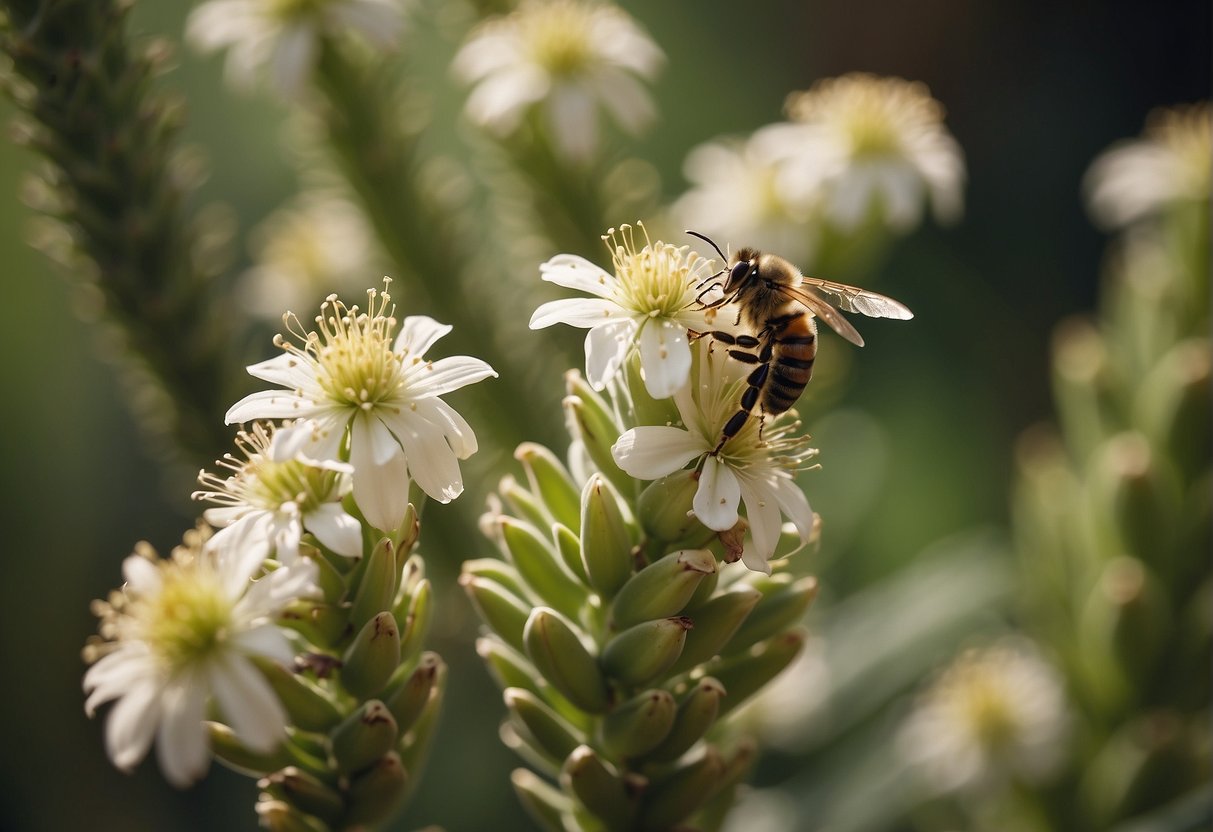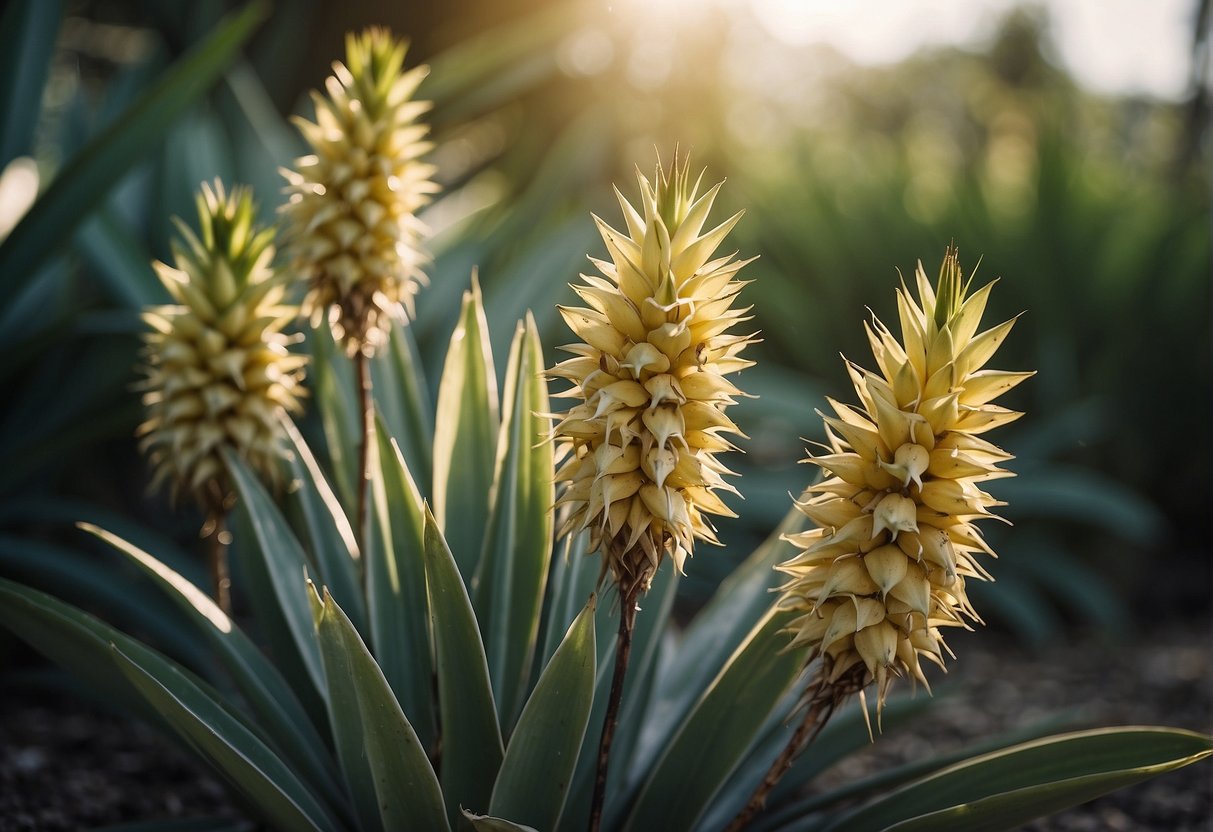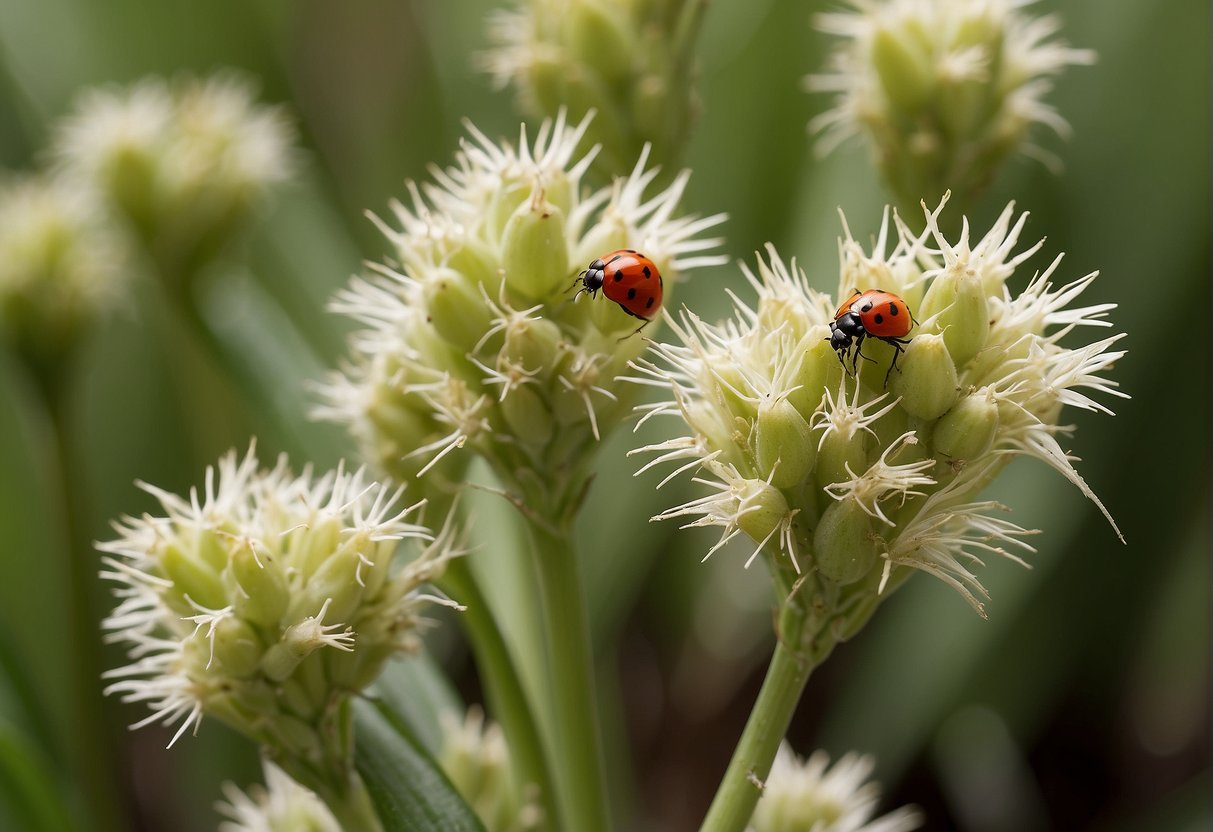What Bugs Are on Yucca Plants: Identifying Common Pests and How to Get Rid of Them
Should you be the delighted caretaker of a yucca plant, it’s possible you’ve spotted some undesired guests residing on its foliage and stalks. Yucca plants are prone to a variety of pests that can inflict harm or even lead to their demise if not addressed promptly. Recognizing the specific pest involved and implementing the right strategies to manage and deter future pest invasions is essential for the well-being and durability of your plant.

Common pests found on yucca plants include spider mites, mealybugs, scale insects, and whiteflies. These insects can cause damage by feeding on the plant’s sap, which can result in yellowing, wilting, and stunted growth. Additionally, some pests like scale insects and mealybugs can secrete a sticky substance called honeydew that can attract other insects and fungi, leading to further damage.
Key Takeaways
- Yucca plants are susceptible to various pests that can cause damage and even death if left untreated.
- Common pests found on yucca plants include spider mites, mealybugs, scale insects, and whiteflies.
- Identifying the type of pest and taking appropriate measures to control and prevent infestations is crucial for the health and longevity of your plant.
Common Pests Found on Yucca Plants
If you have a yucca plant, you may have noticed some unwanted visitors. Here are some of the most common pests that can infest yucca plants and how to identify them.
Yucca Plant Bugs
Yucca plant bugs are small, black insects that feed on the leaves of yucca plants. They can cause damage to the leaves, and in severe cases, can cause the plant to die. You can identify yucca plant bugs by their shiny black bodies and the yellow spots on their wings.
Mealybugs and Scale Insects
Mealybugs and scale insects are two common pests that can infest yucca plants. Mealybugs are small, white insects that feed on the sap of the plant. They can be identified by their white, cottony appearance. Scale insects are small, brown insects that also feed on the sap of the plant. They can be identified by their hard, shell-like covering.
Aphids and Whiteflies
Aphids and whiteflies are two other common pests that can infest yucca plants. Aphids are small, green insects that feed on the sap of the plant. They can be identified by their pear-shaped bodies. Whiteflies are small, white insects that feed on the underside of the leaves. They can be identified by their white, powdery appearance.
Spider Mites and Arachnids
Spider mites and other arachnids can also infest yucca plants. Spider mites are tiny, red insects that feed on the sap of the plant. They can be identified by the fine webs they spin on the leaves. Other arachnids, such as mites and ticks, can also infest yucca plants.
If you notice any of these pests on your yucca plant, it’s important to take action to control them. You can use insecticidal soap or neem oil to kill the pests and prevent them from spreading. Regularly inspecting your yucca plant and removing any pests you find can also help keep your plant healthy and pest-free.
Symptoms of Infestation

If you have a yucca plant, it is important to keep an eye out for signs of infestation. Here are some symptoms to look out for:
Visible Pests and Egg Clusters
One of the most obvious signs of a yucca plant infestation is the presence of visible pests or egg clusters. These may include aphids, spider mites, or whiteflies, which can often be seen on the leaves or stalks of the plant. You may also notice small, white or yellowish egg clusters on the undersides of leaves.
Damage to Leaves and Stalks
Another symptom of yucca plant infestation is damage to the leaves and stalks. This may include yellowing or browning of the leaves, as well as wilting or stunted growth. You may also notice black specks or spots on the leaves, which can be a sign of fungal or bacterial infections.
Plant Growth and Health Indicators
Finally, it is important to pay attention to the overall growth and health of your yucca plant. A healthy plant should have strong, upright stalks and vibrant, green leaves. If you notice that your plant is struggling to grow or looks weak and unhealthy, it may be a sign of an infestation.
In summary, keeping an eye out for visible pests and egg clusters, damage to leaves and stalks, and overall plant growth and health indicators can help you catch a yucca plant infestation early and take appropriate action to protect your plant.
Prevention and Control Methods

Cultural Practices
One of the most effective ways to prevent bugs on your yucca plants is to maintain proper cultural practices. Start by removing any dead or diseased leaves or stems, as these can attract pests. Additionally, avoid overwatering your plants, as this can create a hospitable environment for insects. Finally, make sure to prune your yucca plants regularly to promote healthy growth and prevent overcrowding, which can lead to pest infestations.
Biological Control
Beneficial insects can be used to control pests on yucca plants. Ladybugs, lacewings, and praying mantises are all natural predators of many common yucca pests. You can also introduce nematodes, which are microscopic worms that feed on insect larvae in the soil. Another option is to use insecticidal soap or neem oil, which are derived from natural sources and are less harmful to beneficial insects than chemical pesticides.
Chemical Treatments
If cultural practices and biological control methods are not effective, chemical treatments may be necessary. Imidacloprid and pyrethrin are two common insecticides that can be used to control yucca pests. However, it is important to use these chemicals sparingly and according to the manufacturer’s instructions, as overuse can harm beneficial insects and lead to pesticide resistance. Horticultural oil can also be effective in controlling pests, as it suffocates insects by coating their bodies.
Seasonal Care and Maintenance
Taking care of your yucca plants is essential for their growth and health. Here are some tips for seasonal care and maintenance:
Overwinter
During the winter season, it’s essential to protect your yucca plants from frost. Cover them with a frost cloth or move them indoors if possible. Yucca plants are drought-tolerant but still need some water during the winter. Make sure to water them once a month.
Spring
In the spring, it’s time to inspect your yucca plants for any signs of damage or pests. Look for any yellow or brown leaves and remove them. Check for any pests like spider mites or mealybugs and treat them accordingly. Yucca plants need full sunlight, so make sure they are getting enough of it.
Water
Yucca plants are drought-tolerant, but they still need water. Water them deeply once a week during the growing season. Make sure the soil is well-draining to prevent root rot.
Sunlight
Yucca plants need full sunlight to thrive. Make sure they are getting at least six hours of direct sunlight per day. If your yucca plant is not getting enough sunlight, move it to a sunnier location.
Inspections
Regular inspections are essential for the health of your yucca plants. Check for any signs of damage or pests and treat them accordingly. Look for any yellow or brown leaves and remove them.
Fertilized Eggs
Yucca plants are self-fertilizing. They produce fertilized eggs that grow into new plants. You can harvest these eggs and plant them in a new pot or in your garden.
Temperature
Yucca plants are hardy and can tolerate a wide range of temperatures. However, they prefer temperatures between 60-95°F. Make sure to protect them from frost during the winter.
Drought-tolerant
Yucca plants are drought-tolerant and can survive in dry conditions. However, they still need water to thrive. Water them deeply once a week during the growing season.
Nutrients
Yucca plants don’t need a lot of nutrients to thrive. However, you can fertilize them once a month during the growing season with a balanced fertilizer. Make sure to follow the instructions on the fertilizer package.
Frequently Asked Questions
How can I identify and treat yucca weevils?
Yucca weevils are small, black beetles that can cause significant damage to yucca plants. They lay their eggs in the base of the plant, which can cause the plant to rot. Signs of a yucca weevil infestation include wilted leaves, yellowing leaves, and holes in the stem. To treat a yucca weevil infestation, you can use an insecticide that is specifically designed to target these pests. You can also remove the infected parts of the plant and dispose of them properly.
What methods are effective for removing yucca mites?
Yucca mites are tiny, spider-like creatures that can cause damage to yucca plants. Signs of a yucca mite infestation include leaf discoloration, leaf distortion, and stunted growth. To remove yucca mites, you can use a miticide that is specifically designed to target these pests. You can also prune the infected parts of the plant and dispose of them properly.
Are there natural predators for pests found on yucca plants?
Yes, there are natural predators for pests found on yucca plants. Ladybugs, lacewings, and parasitic wasps are all natural predators that can help control pest populations on yucca plants. You can attract these predators to your garden by planting flowers and herbs that they are attracted to, such as dill, fennel, and marigolds.
What are the common signs of a yucca plant bug infestation?
Common signs of a yucca plant bug infestation include yellowing leaves, brown spots on the leaves, and holes in the leaves. You may also notice a sticky substance on the leaves, which is a sign of honeydew excreted by the bugs. If you suspect that your yucca plant has a bug infestation, inspect the plant carefully for signs of pests.
Can yucca plant pests cause harm to humans or pets?
While yucca plant pests are not harmful to humans or pets, they can cause significant damage to the plant. In severe cases, a yucca plant infested with pests may die. It is important to take steps to prevent and control pest infestations to ensure the health of your yucca plants.
What steps should I take to prevent bugs from infesting my yucca plants?
To prevent bugs from infesting your yucca plants, it is important to keep the plants healthy and well-maintained. This includes regular watering, fertilizing, and pruning. You should also inspect your plants regularly for signs of pests, and remove any infected parts of the plant immediately. Additionally, you can use insecticidal soap or neem oil to prevent pest infestations.


